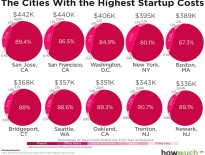Jit Kee Chin
Chief Data Officer and Executive Vice President, Suffolk
Age: 39
Experience: 10 years
Boston-based construction manager Suffolk is embracing technology to drive efficiencies and reduce risks, using image recognition to prevent workplace safety violations, Bluetooth-enabled wearables track workers on job sites and facial recognition technology to boost perimeter security. After nearly 10 years with consultants McKinsey & Co. in London and Boston, Jit Kee Chin joined Suffolk last year as its chief data officer. The California Institute of Technology and MIT grad works with Suffolk’s innovation and strategy teams to get a big-picture view of construction projects.
Q: What were some of the industry sectors you worked with in your role at McKinsey?
A: At McKinsey, the model is when you’re more junior you go across the board, in a lot of industries. Toward the later part of my tenure, I was primarily working with the travel, transportation and logistics companies. Construction was an adjacent sector. In the logistics industry, it was looking at the best way to distribute stores nationally, [finding] the optimal locations given the kind of traffic you would want. Logistics operators are looking for convenience. They would look at the cost of location, the choice between high-cost central locations versus more peripheral locations, and internal considerations, such as store format.
Q: Were you looking for a position in the construction industry specifically when you sought the position at Suffolk?
A: I call it serendipity. I was advising clients on how to go through the big data and advanced analytics transformations. I was familiar with the construction industry and met Suffolk by chance.
Big data is just hitting construction. There’s enough activity in the space now that it’s going to start accelerating over the next five to 10 years. It was an opportunity to be in the forefront of this field. I’ve not met another chief data officer for a construction company. It was an opportunity not just to take the role at Suffolk, but to shape the role more broadly.
Q: Research indicates construction has had some of the fewest productivity gains of any industry over recent decades. What’s holding it back?
A: There have been many reports debating this question. McKinsey had a report that ranked 10 reasons, from external forces to dynamics within the industry and individual companies. Among the external factors are things are getting more complex, the design of buildings and regulation. In my view this is one of the challenging ones: misalignment of contractual incentives. You have a lot of stakeholders – subcontractors, architects, general contractors, engineers.
On the firm level, we all can do a better job of using data to drive our products. Investment in technology and innovation and data is also an issue. One thing I’ve observed in the time I’ve been here is getting the industry to align incentives and contractors is a huge challenge. You need concrete examples of success. One way I see this happening is if there is a clear example of a project which leads to an outstanding result, that might start to move the needle. The industry has been moving more to integrated product delivery, but there’s decades of inertia in this particular sector.
Q: What are some examples of how Suffolk is using big data?
A: The first is getting an integrated 360-degree view of the project. It’s really about interoperability, which is a buzzword these days. Construction has historically been very application-centric. The different parts of the life cycle, from estimating to scheduling to project management to close-out, tend to have different applications that store data in their own silos. The 360-degree view of the project in real time is one of the themes from my time at Suffolk. A lot of what we do is manage the build and risk: quality risk, injury risk, schedule risk, budget risk. With more information and data, risks can be better managed. We are piloting different types of prediction models to give us advance warning.
The third one is pretty far out, but it’s about leveraging new data capture technology to manage the build: wearables and sensors. I work closely with our chief innovation officer to deploy some of the solutions: RFID on the job site, wearables so you can track where people are and their movements so you can prevent injuries.
Q: What’s the potential cost savings through big data?
A: At the high level, the cost savings in construction are estimated at between 27 and 38 percent. That’s not just (through) data and tech. That’s if you address all the reasons at an industry and firm level. Individual experiments are not going to deliver that savings. It’s about how you sew everything into a connected whole.
Q: How does your role dovetail with Suffolk’s Innovation and Strategy teams?
A: The strategy director is two doors down and I can see the chief innovation officer out of my window. With our head of strategy, we have regular discussions of where the industry is going and where we are going as a company. We have overlapping spaces.
Chin’s Five Favorite Travel Destinations:
- Costa Rica
- Big Sur, California
- New York
- London
- Paris




 |
| 


